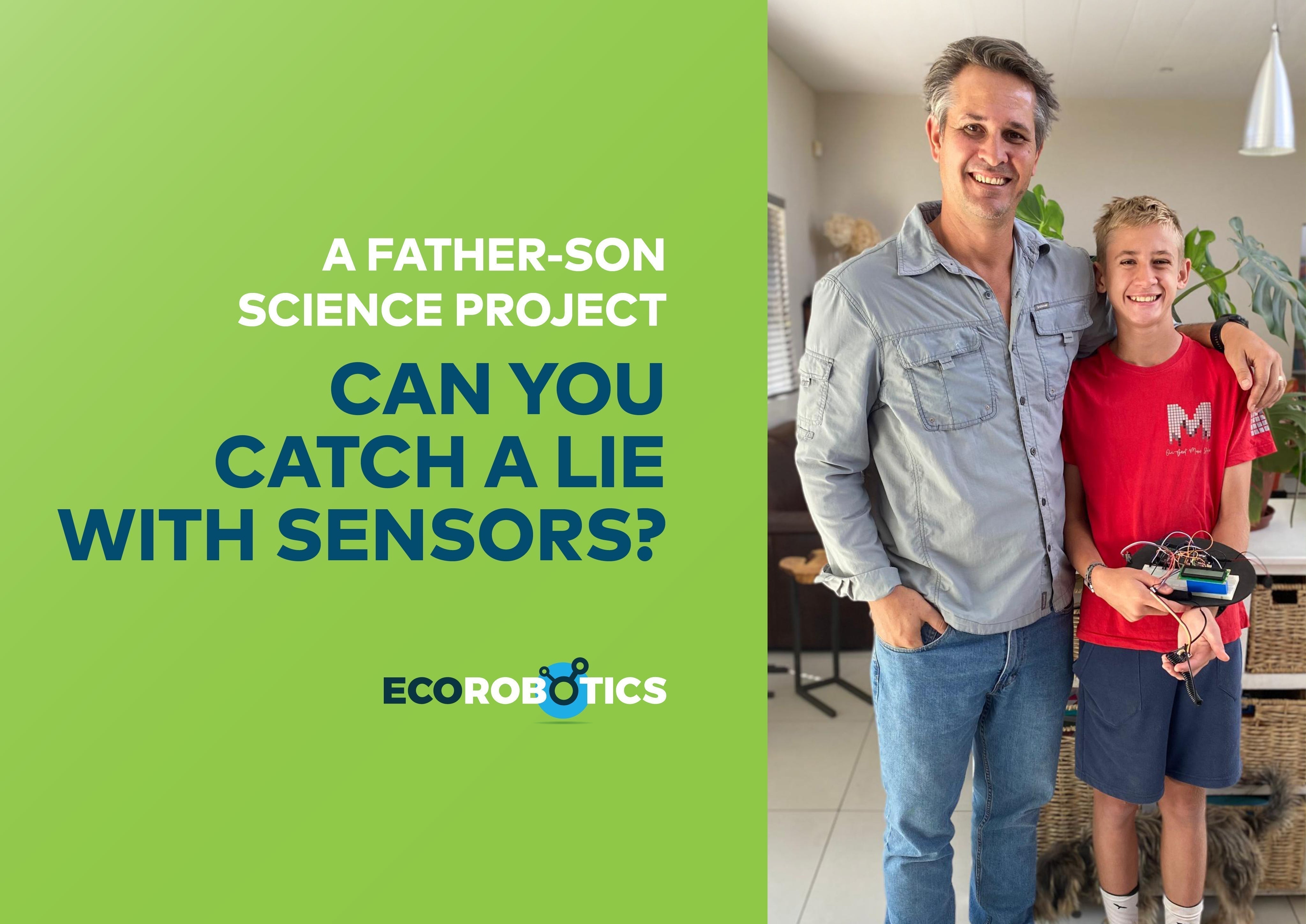When my son and I started brainstorming ideas for his science project, we wanted something hands-on, slightly dramatic, and grounded in real-world applications. The idea? Build a basic lie detector using biometric sensors.
Thanks to EcoRobotics, a proudly Namibian electronics supplier, we got our hands on a MAX30105 heart rate sensor and a GSR (galvanic skin response) sensor, both of which became the core of our lie-detection setup. These sensors were incredibly easy to integrate, and EcoRobotics’ local support and quick delivery made a world of difference in getting the project moving on time.
What we built
Using an Arduino board, we connected:
- The MAX30105, which reads infrared values related to heart rate.
- The GSR sensor, which detects changes in skin conductivity (a proxy for stress).
- A DHT11 sensor for temperature, though we later found it to be less responsive for our needs. (DHT11 / Keyestudio ESP01 DHT11)
With some creative coding and testing, we built a system that could display real-time readings and even show results on an LCD screen.


How the sensors performed
The heart rate sensor (MAX30105) was surprisingly reliable. While it doesn't give exact beats-per-minute like a commercial heart rate monitor, the IR values provided a consistent pattern of rising during stress (i.e., during lies) and dropping during calm (i.e., truth-telling). For the purpose of tracking changes in physiological state, it worked perfectly.
The GSR sensor was just as impressive. It picked up noticeable changes in skin conductivity, especially when participants were under pressure. The readings weren’t absolute values, but again, we were interested in trends — and the GSR sensor clearly delivered.
As for the temperature sensor, while it worked technically, we found that changes in body temperature happen too slowly to be useful in a short-term experiment like ours. We agreed that for future versions, a more sensitive sensor or longer calibration periods would be needed.



Lessons & surprises
- We were amazed at how well our bodies react to simple questions. Even casual lies triggered visible changes in heart rate and skin conductivity.
- The real fun came when we added an LCD screen to show real-time values — making the whole thing look like a proper lie detector setup!
- We learned that even with basic components, you can create a project that feels like science fiction… but is very real.


